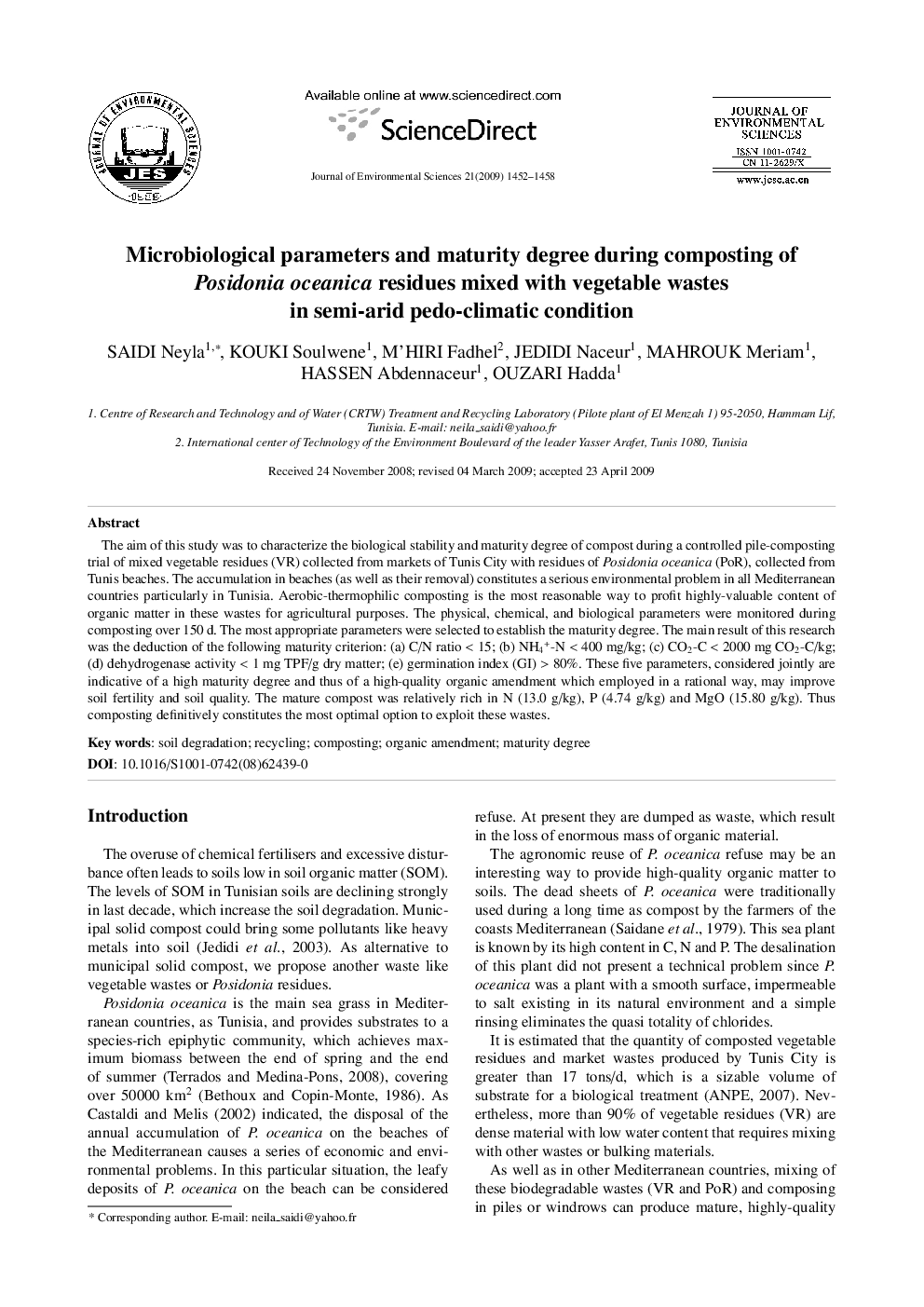| کد مقاله | کد نشریه | سال انتشار | مقاله انگلیسی | نسخه تمام متن |
|---|---|---|---|---|
| 4455883 | 1312534 | 2009 | 7 صفحه PDF | دانلود رایگان |

The aim of this study was to characterize the biological stability and maturity degree of compost during a controlled pile-composting trial of mixed vegetable residues (VR) collected from markets of Tunis City with residues of Posidonia oceanica (PoR), collected from Tunis beaches. The accumulation in beaches (as well as their removal) constitutes a serious environmental problem in all Mediterranean countries particularly in Tunisia. Aerobic-thermophilic composting is the most reasonable way to profit highly-valuable content of organic matter in these wastes for agricultural purposes. The physical, chemical, and biological parameters were monitored during composting over 150 d. The most appropriate parameters were selected to establish the maturity degree. The main result of this research was the deduction of the following maturity criterion: (a) C/N ratio < 15; (b) NH4+-N < 400 mg/kg; (c) CO2-C < 2000 mg CO2-C/kg; (d) dehydrogenase activity < 1 mg TPF/g dry matter; (e) germination index (GI) > 80%. These five parameters, considered jointly are indicative of a high maturity degree and thus of a high-quality organic amendment which employed in a rational way, may improve soil fertility and soil quality. The mature compost was relatively rich in N (13.0 g/kg), P (4.74 g/kg) and MgO (15.80 g/kg). Thus composting definitively constitutes the most optimal option to exploit these wastes.
Journal: Journal of Environmental Sciences - Volume 21, Issue 10, 2009, Pages 1452-1458